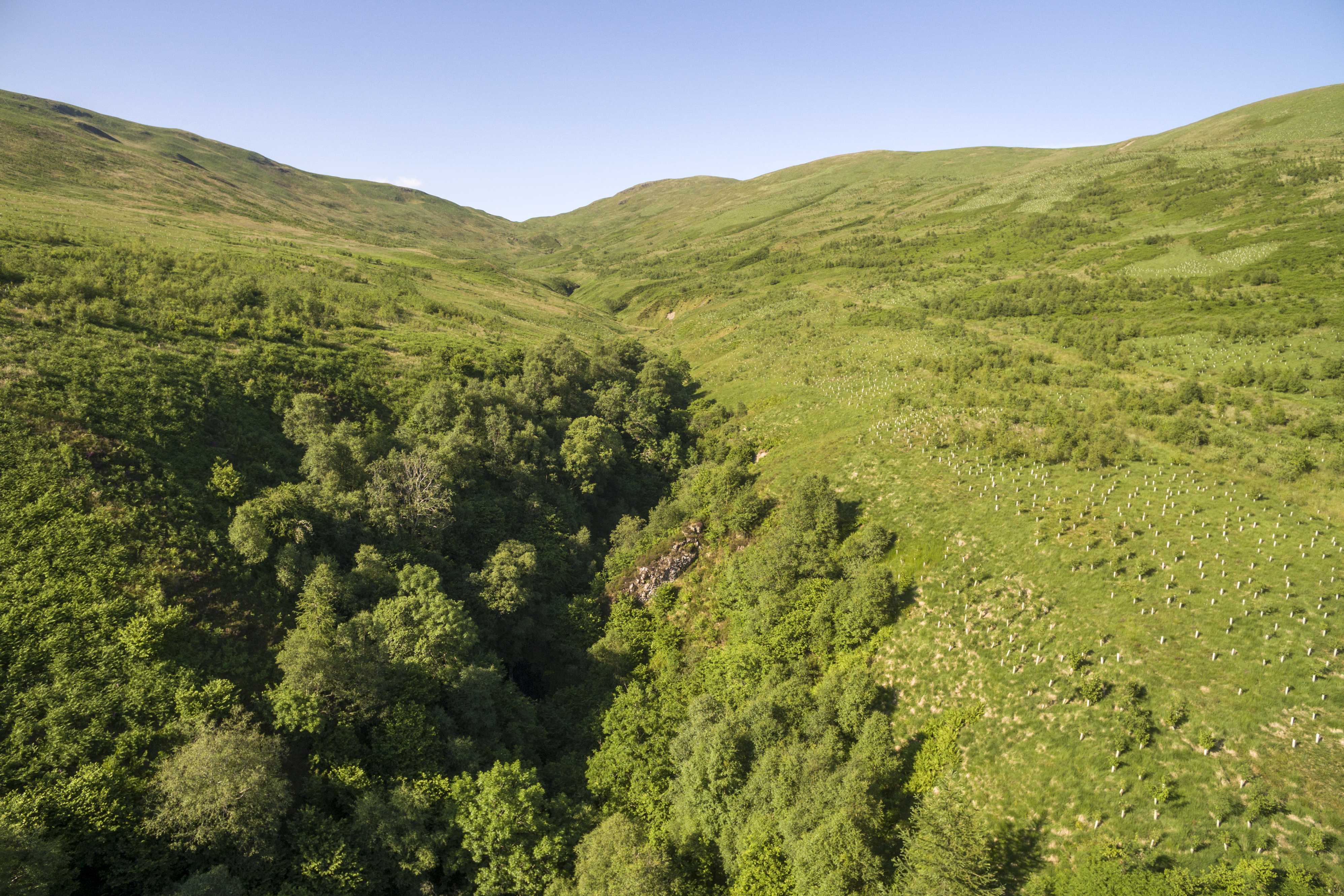In recent weeks there has been some welcome scrutiny of the tree planting agenda. Misguided plans to afforest a wildflower meadow in Cumbria, combined with allegations that commercial forests do not store carbon and fears that carbon offsetting is a ‘wild west’ have led some pundits to question whether woodland creation is a worthwhile enterprise at all, let alone the panacea some politicians are proclaiming.
As is so often the case, the answer is that woodland creation is neither perfect nor pointless. Without doubt, it is an effective tool for combatting the twin environmental crises of climate and biodiversity, but only one of many in our arsenal. To realise its full potential, it should be deployed with care, commitment and clear intentions.
There are also valid criticisms nestled within the recent media coverage, but alongside them a lack of nuance and understanding. The issues raised have already been thought about long and hard by both our team at Forest Carbon and many of the other stakeholders involved in woodland creation. Indeed, the mechanisms to mitigate several of these problems have been in place for some time, contained within the often-overlooked ‘Woodland Carbon Code’.
The ‘Woodland Carbon Code’ (WCC) is a carbon standard, a domestic equivalent of international assurances like the ‘Gold Standard’ and ‘Verified Carbon Standard’. Government-backed, the WCC was launched in 2011 to ensure that the woodland branch of the UK’s voluntary carbon market was regulated and transparent, able to provide stakeholders with total confidence in its integrity. In this sense the WCC is our country’s safeguard against a “carbon offsetting Wild West”. Every woodland created under the code is certified to ISO standards by a UKAS accredited third party and registered with the independent 'Markit Registry', a leading provider of global carbon and environmental credit registry services.
The code ensures that each of its projects is based on specific, scientifically-derived and risk adjusted carbon sequestration estimates, and that their additionality and permanence are guaranteed. It also takes into account the character of a woodland when determining how much carbon it will sequester. For commercial forests, deductions are made depending on the whether the trees will be thinned, felled or both. For clear-fell harvesting, the carbon penalty is severe – as it should be – given the amount of above-ground biomass that is being removed, and the disturbance to the soil that occurs. Needless-to-say, after any timber extraction has occurred the WCC stipulates that the site must be restocked with trees, to ensure its permanence as a carbon store.
But that isn’t enough for some detractors of productive woodland, who argue that all the timber from commercial forests should be ear-marked for construction and other long-term uses, to make sure that the embedded carbon is locked up. Plenty of home grown wood does already get used for this purpose, however, the reality is that a significant proportion of our productive woodlands’ output becomes paper, packaging materials, pallets and fence posts. This is often framed negatively, but actually it is essential that those things are made out of wood and not from non-renewable or metal alternatives.
It is also best that we use domestic supply for this purpose, instead of just offshoring our forest footprint to satisfy demand, potentially jeopardising the security of old-growth forests in less-stringently regulated parts of the world. In other words, it is vital that carbon sequestration isn’t the only metric we consider when assessing the sustainability of our commercial woodlands; a more holistic view is required. If we are serious about reducing our dependence on plastic, for instance, we are going need a lot more wood.
In any case, carbon funding directly incentivises the creation of broadleaf woodlands comprised primarily of native species like oak, beech and alder, as these pay out the greatest carbon dividends in the long run. As well as this, the most effective management practises for greenhouse gas sequestration tend to be low-intervention, meaning the best woodlands for carbon capture are also often the best for biodiversity, flood mitigation and a host of other ecosystem benefits.
Increasing the planting of these native woodland species has been one of the key achievements of the UKs voluntary carbon market, and the businesses we talk to are often surprised that Forest Carbon’s top tree is not an exotic, fast-growing conifer, but the humble birch! Over 2 million of them are currently growing in our projects across the country, and that number is rising all the time.
It’s statistics like these that make it hard to dispute the utility of voluntary carbon markets, and carbon offsetting in general. With appropriate regulation, carbon offsetting is a force for good, and a necessary tool for both mitigation of and adaptation to climate change. The UK's forest cover is still only at 13%, woeful in comparison to the European average of 44%. Increasing it to levels that are commensurate with the needs of our country in the 21st century is a task too big for the government to meet alone. There needs to be private sector involvement and financial incentives at work to convince the people who actually manage the land to change their activities.
But change doesn’t happen overnight, and nor would we want it to. A gradual transition is essential if local economies and livelihoods are to flourish in the meantime. Sensible planning, clear foresight and commitment are what woodland creation requires at this time, not knee-jerk planting frenzies. We must steadily build the country’s capacity to grow, manage and maintain new forest assets, blending interest and funding from a variety of sources.
Undoubtedly, there will still be times when the wrong tree is planted in the wrong place and in this regard continued media scrutiny is an important disincentive to have. There are also several issues within woodland creation that urgently need to be resolved - plastic tree tubes and a lack of natural regeneration to name but two. But that is no excuse to buy into simplistic dismissals of tree planting, commercial forests or carbon offsetting. These are complex times, requiring multiple trade-offs between diverse land-use objectives and the resulting solutions are rarely wholly bad or good.
At Forest Carbon we are always thinking hard about the impact of everything we do, and this won’t stop. However, right now we feel the need to emphasize that when it comes to woodland creation for carbon capture in the UK, the vast majority of the players in this game are in it for the right reasons. With the regulatory structure and transparency provided by the ‘Woodland Carbon Code’ to support us, we will continue to harness the power of voluntary carbon markets, encouraging polluters to pay and putting their money to use by creating the carbon stores and diversified rural economies that we desperately need.

/public/694/2e2/b68/6942e2b689131175280316.jpg)
/public/692/dd7/e0c/692dd7e0ca905474952387.jpg)
/public/68f/f39/36d/68ff3936defff352354004.jpg)